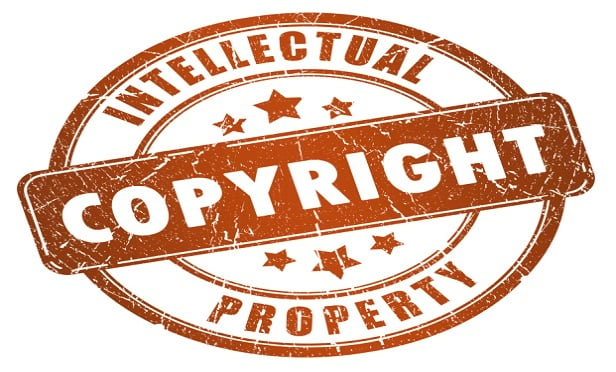Features

Disclosure of Investigations: Whether and When for Public Companies
You should be thinking about disclosure long before you even hear from a whistleblower, specifically, in terms of setting up policies and procedures governing how to handle the information flow from the investigative side of the house to the disclosure side.
Features

Smoke & Mirrors: The New York Cannabis Law's Illusory Lease Mandate
New York's recently enacted cannabis law, the Marijuana Regulation and Taxation of 2021 (MRTA), created a maze of new legal requirements. These provisions affect not only cannabis companies, but also the companies that conduct business with them.
Features

As Federal Antitrust Prosecutions Rise, Potential Criminal Pitfalls Loom for HR Professionals
The Biden administration seeks to position itself as one that will crack down on employers' attempts to limit their employees' mobility and pay through allegedly non-competitive measures.
Features

Appellate Division Upholds West Side Tower
In a dispute over West Side development, the First Department handed a victory to developers seeking to build a 39-story building on the block between West 65th and West 66th Street, and Columbus Avenue and Central Park West.
Features

Selective Reassessment of Only Commercial Properties Violates the Uniformity Clause
The Commonwealth Court of Pennsylvania recently analyzed whether the City of Philadelphia's selective reassessment in tax year 2018 of only commercial properties at current market value violated the Uniformity Clause and the Assessment Law's requirement that the City assess all properties annually at actual market value.
Features

Retention of Title Disputes: Don't Take the Uniform Commercial Code for Granted
This article reminds us of the conflict-of-laws analysis at the heart of such retention of title disputes, and then discuss the multi-step UCC analysis that is also required.
Features

Second Circuit Applies Federal Bankruptcy Law, Not Securities Law, In Madoff SIPA Liquidation
The Second Circuit applied federal bankruptcy law when holding that good faith is an affirmative defense.
Features

Proposed Changes In UCC Address Virtual Currency Financing
Financial institutions are beginning to accept virtual currencies as collateral for financings. Could this become common for independent film productions and other entertainment industry ventures? This article examines the scope of UCC Article 9 with a focus on virtual currencies, taking into consideration issues of classification and perfection.
Features

How NY Courts Find Copyright Preemption of State Law Right of Publicity Claims
To survive preemption under §301 of the Copyright Act, courts consider whether a state law claim in a lawsuit has an "extra element" that qualitatively distinguishes it from a federal copyright claim. Courts typically find that state law claims, such as breach of contract, have an extra element. Other state law claims, such as conversion, get varying court determinations as to whether they are preempted.
Features

Newberg, McCabe, Carson Will Preside Over Copyright Claims Board
The U.S. Copyright Office has found some big names for its Copyright Claims Board.
Need Help?
- Prefer an IP authenticated environment? Request a transition or call 800-756-8993.
- Need other assistance? email Customer Service or call 1-877-256-2472.
MOST POPULAR STORIES
- The 'Sophisticated Insured' DefenseA majority of courts consider the <i>contra proferentem</i> doctrine to be a pillar of insurance law. The doctrine requires ambiguous terms in an insurance policy to be construed against the insurer and in favor of coverage for the insured. A prominent rationale behind the doctrine is that insurance policies are usually standard-form contracts drafted entirely by insurers.Read More ›
- A Lawyer's System for Active ReadingActive reading comprises many daily tasks lawyers engage in, including highlighting, annotating, note taking, comparing and searching texts. It demands more than flipping or turning pages.Read More ›
- The Brave New World of Cybersecurity Due Diligence in Mergers and Acquisitions: Pitfalls and OpportunitiesLike poorly-behaved school children, new technologies and intellectual property (IP) are increasingly disrupting the M&A establishment. Cybersecurity has become the latest disruptive newcomer to the M&A party.Read More ›
- Abandoned and Unused Cables: A Hidden Liability Under the 2002 National Electric CodeIn an effort to minimize the release of toxic gasses from cables in the event of fire, the 2002 version of the National Electric Code ("NEC"), promulgated by the National Fire Protection Association, sets forth new guidelines requiring that abandoned cables must be removed from buildings unless they are located in metal raceways or tagged "For Future Use." While the NEC is not, in itself, binding law, most jurisdictions in the United States adopt the NEC by reference in their state or local building and fire codes. Thus, noncompliance with the recent NEC guidelines will likely mean that a building is in violation of a building or fire code. If so, the building owner may also be in breach of agreements with tenants and lenders and may be jeopardizing its fire insurance coverage. Even in jurisdictions where the 2002 NEC has not been adopted, it may be argued that the guidelines represent the standard of reasonable care and could result in tort liability for the landlord if toxic gasses from abandoned cables are emitted in a fire. With these potential liabilities in mind, this article discusses: 1) how to address the abandoned wires and cables currently located within the risers, ceilings and other areas of properties, and 2) additional considerations in the placement and removal of telecommunications cables going forward.Read More ›
- Guidance on Distributions As 'Disbursements' and U.S. Trustee FeesIn a recent case from the Bankruptcy Court for the District of Delaware, In re Paragon Offshore PLC, the bankruptcy court provided guidance on whether a post-plan effective date litigation trust's distributions constituted disbursements subject to the U.S. Trustee fee "tax."Read More ›
